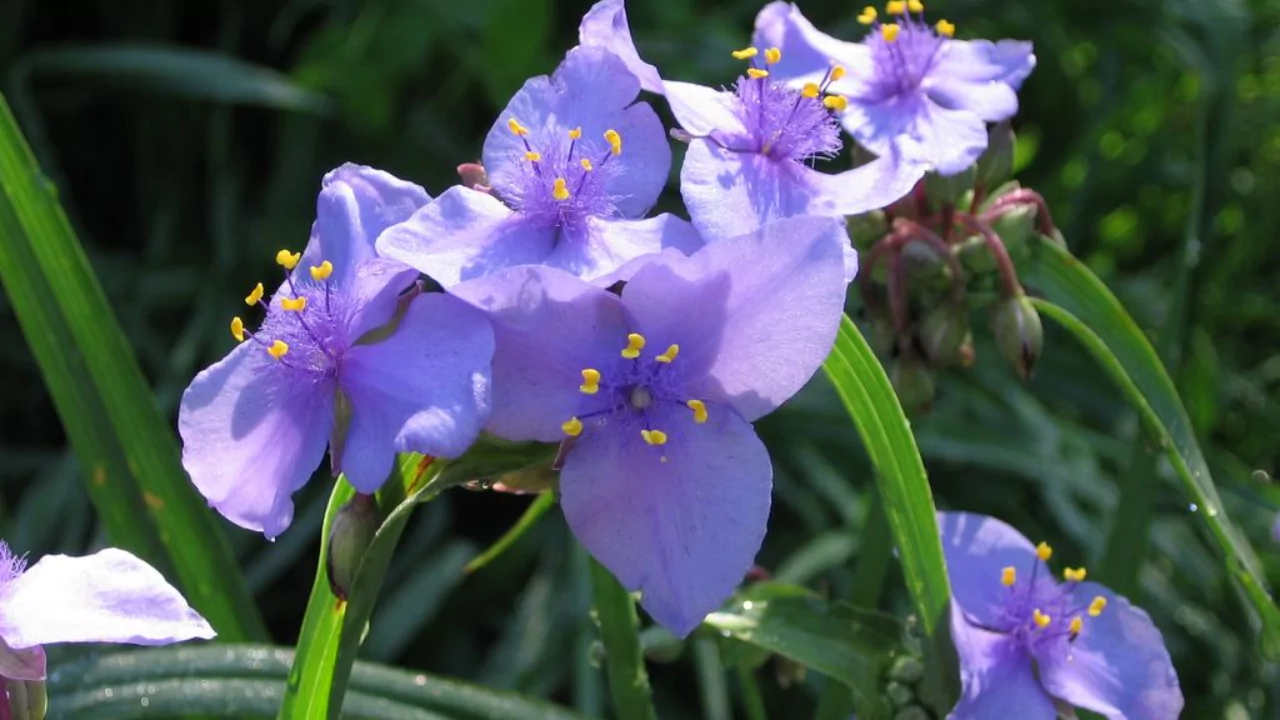
Spiderwort (Tradescantia) is a lovely, eye-catching plant that is not seen in cultivation often enough. This plant is found in woodlands and did well in areas with damp, fertile soil. While partial shade is preferred, full sun conditions do not pose a problem for the plant as long as the soil stays damp.
A distinctive feature of the spiderwort is its 1 to 3 feet height and long, strap-like leaves that resemble those of daylilies. Moreover, it bears simple flowers that are blue, violet, pink or crimson in color. Early summer marks the appearance of blooms, which are short-lived (lasting a day) and time-bound, closing in the afternoon. Flowering lasts around 4 to 6 weeks.
Why the name spiderwort? There are several explanations. It was purported that the plant’s sap cured spider bites. It is possible that the dangling flowers bear resemblance to spiders. Furthermore, the sepals are covered with glistening hairs which are reminiscent of spider webs, especially if dew-covered. Their combination makes a theory pickable.
Spiderwort Propagation
Obtaining spiderwort through a friend or buying nursery plants are considered the best methods of propagation. An established plant provides multiple divisions though due to the rapid spread of spiderwort via underground runners.
It is possible to cultivate spiderwort from seeds. Sowing should take place in the autumn. To foster soil health, incorporate compost or aged manure to a depth of 8 inches. Then, level the soil and add the seeds at a depth of 1/8 inch.
In the event that you wish to start seeds indoors, you will have to give them a cold period to break dormancy. Combine equal parts sand and perlite and place in a plastic bag. Add 1 tablespoon hot water and mix well.
To break dormancy, mix the seeds with the sand mixture and refrigerate for 4 months, then 8 weeks before the last frost remove the bag from the fridge. Fill a seed-starting tray with a starter mix and cover it with the sand mixture.
Moisten the tray using a spray bottle and cover with plastic wrap. Place in a warm area and spray as needed to maintain even moisture. Remove covering after seedlings sprout and move to a sunny south window or under grow lights while watering as needed. Once the seedlings reach 4 inches, transplant them outdoors.
Growing Spiderwort
Growing spiderwort is relatively easy. It thrives best in moderately moist soil and requires a balanced fertilizer in the spring just before new growth appears. However, do not over fertilize, as it will cause weak, spindly growth and few blooms.
Once spiderwort has been established, it will spread quickly. It can become invasive in a mixed bed, so try to give it space. In order to keep it controlled, divide it every three to four years. In the middle of summer, the plant can be messy and unruly. After blooming, cut it back to tidy the plant and promote another blooming cycle.
If you do not have a garden, spiderwort can be grown in containers or indoors. Place it in a large container placed close to a bright sun window, but ensure it is self-contained.
The plant is relatively problem-free in terms of diseases or pests, but can occasionally suffer from rust or powdery mildew. To prevent most problems, ensure that the leaves are dry and air circulates freely around the plant. Cats and dogs enjoy playing with it while deer and sheep may dine on it.
Varieties of Spiderwort
‘Zwanenberg’ is another variety of spiderwort with large blue to deep-purple flowers. It is traditional and features very large blooms.
The cultivar ‘Sweet Kate’ has purple-blue flowers with yellow leaves, making it captivating.
Its blooms are deep crimson, and it reaches a height of 20 inches.
‘Snow Cap’ is described as having pure white flowers.